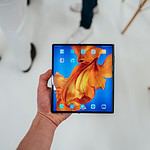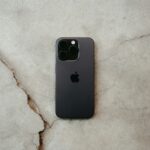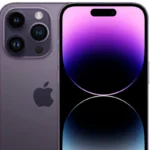It’s frustrating when you try to back up or update your iPad, but iTunes doesn’t recognize it. This is a common problem that can happen for various reasons, like issues with the cable or software conflicts. To fix an iPad that iTunes doesn’t recognize, first check your connection cables and restart both your devices. Also, make sure your software is up to date. Many people don’t realize that simple solutions are available at home.
Sometimes your computer may see the iPad, but iTunes doesn’t, or you may need to trust your computer on your iPad screen. Even if your iPad is disabled from too many incorrect passwords, you can still take steps to restore the connection. If you have connected your iPhone or iPad to your computer and nothing happens—no charging, no iTunes/Finder prompt, and no “Trust This Computer” message—you’re not alone. This issue commonly occurs, especially after iOS or macOS updates. The good news is there are several solutions to get everything working again.
1. Check the Basics First
Before diving into more technical fixes, start with these quick checks:
- Try a different USB port on your computer.
- Use a different Lightning or USB-C cable, preferably an Apple-certified one (MFi).
- Make sure your iPhone or iPad is unlocked and on the Home Screen when connecting.
- Use an official Apple cable, especially if your current one is frayed or third-party.
If your device charges but doesn’t show up on the computer, the issue is likely software-related.
2. Restart Both Devices
Sometimes, a simple reboot solves everything:
- Restart your iPhone/iPad
- For iPhones with Face ID: Press and hold the Side + Volume Down buttons until the power slider appears.
- For iPhones with a Home button: Press and hold the Power button.
- Restart your computer (Mac or Windows).
Then reconnect the devices and check for any pop-ups.
3. Update Your Software
Compatibility issues are often caused by outdated software. Make sure everything is up to date:
- On iPhone/iPad: Go to Settings > General > Software Update.
- On Mac: Go to System Settings > General > Software Update.
- On Windows: Update iTunes (from Microsoft Store or Apple’s site) and check for Windows Updates.
4. Trust This Computer Prompt Not Appearing?
If you don’t see the “Trust This Computer” pop-up:
- Disconnect and reconnect your iPhone/iPad.
- Unlock the device and stay on the Home Screen.
- Use a different USB port.
- Try another cable.
If it still doesn’t appear, go to Settings > General > Transfer or Reset iPhone > Reset > Reset Location & Privacy. This will reset trust settings and may trigger the prompt again on reconnect.
5. Check Device Manager or Finder/iTunes
On macOS:
- Open Finder and look under the sidebar for your iPhone or iPad.
- If it doesn’t appear, go to Apple Menu > System Settings > General > Login Items and make sure no third-party apps are interfering.
On Windows:
- Open Device Manager:
- Look under Portable Devices for “Apple iPhone.”
- If you see a yellow triangle or error, right-click and choose Update driver or Uninstall and reconnect your device.
- If iTunes is installed, it should launch or recognize your device once the correct driver is loaded.
6. Reinstall Apple Mobile Device USB Driver (Windows Only)
If your iPhone still isn’t recognized, try this:
- Disconnect your device.
- Close iTunes.
- Press Windows + R, type
devmgmt.msc, and press Enter. - Expand Universal Serial Bus Controllers.
- Right-click Apple Mobile Device USB Driver and uninstall.
- Reconnect your iPhone — the driver should reinstall automatically.
7. Reset Location & Privacy Settings
On your iPhone or iPad, go to:
Settings > General > Transfer or Reset iPhone > Reset > Reset Location & Privacy
This will force your device to ask you to “Trust” the computer again, which can help fix recognition issues.
8. Check for Security or Antivirus Conflicts
Some antivirus programs, especially on Windows, can block the USB connection to your phone or interfere with iTunes. Try temporarily disabling your antivirus/firewall and reconnecting the device.
9. Try a Different Computer
If nothing works, try connecting your iPhone or iPad to a different computer. If it gets recognized there, the issue is isolated to your original computer.
Key Takeaways
- Check your USB cable and connections before trying more complex solutions.
- Restart both your iPad and computer to resolve most simple connection issues.
- Update iTunes and iOS to ensure compatibility and prevent software conflicts.
Understanding iTunes and iPad Connectivity
When iTunes doesn’t recognize your iPad, it can stop you from syncing your data, updating your device, or making backups. The connection between your iPad and iTunes requires both proper hardware setup and correct software configuration.
Essential Prerequisites for Syncing
Before attempting to connect your iPad to iTunes, make sure you have the following:
Latest iTunes version – Running outdated software often causes connection problems. Update iTunes on your computer regularly.
Proper cables – Use only genuine Apple USB cables as third-party cables may not work correctly. Check your cable for damage like fraying or bent connectors.
Compatible computer – Ensure your Windows PC or Mac meets the minimum requirements for the current iTunes version. Older computers may struggle with newer iOS devices.
Trusted connection – When connecting your iPad, always tap “Trust This Computer” when prompted on your iPad screen. Without this permission, iTunes cannot access your device.
Common Causes of Connectivity Issues
Many factors can prevent iTunes from seeing your iPad:
Driver problems – On Windows computers, outdated or corrupt Apple USB drivers often block connections. These drivers handle the communication between your iPad and computer.
USB port issues – Try connecting to a different USB port directly on your computer, not through a hub. Some ports may provide insufficient power for iPad connectivity.
Software conflicts – Other programs running on your computer might interfere with iTunes. Security software sometimes blocks connections accidentally.
iPad lockup – If your device is frozen or unresponsive, a simple restart of your iPad can fix many recognition issues.
Initial Troubleshooting Steps
When iTunes won’t recognize your iPad, a few simple fixes can often solve the problem. These solutions range from checking physical connections to updating software and restarting your devices.
Verifying USB Connections and Ports
Start by examining your USB cable for any visible damage. Frayed cables or bent connectors often cause connection issues. Try using a different Apple-certified cable to rule out cable problems.
Test different USB ports on your computer. Some ports might have power issues or damage that prevents proper connections. On Windows computers, USB 3.0 ports (usually blue) sometimes have compatibility issues with Apple devices.
Remove any USB hubs or dongles and connect your iPad directly to your computer. USB hubs can cause power or connection issues that prevent iTunes from detecting your device.
If using Windows, check Device Manager to see if your iPad appears when connected:
- Right-click on Start and select “Device Manager”
- Look under “Universal Serial Bus controllers”
- Connect your iPad to see if a new device appears
Checking the iTunes Version
Outdated iTunes software often fails to recognize newer iPad models. Check if you’re running the latest iTunes version on your computer.
For Windows users:
- Open iTunes
- Click Help > Check for Updates
- Follow prompts to install any available updates
For Mac users with macOS Catalina or newer, iTunes is replaced by Finder:
- Make sure your Mac operating system is updated
- Connect your iPad and look for it in the Finder sidebar
If updates don’t help, try completely removing and reinstalling iTunes. Corrupt installation files sometimes prevent device recognition.
Restarting Devices and Software
The classic “turn it off and on again” approach often works for iTunes connection problems. Close iTunes completely before restarting it.
Restart your iPad by:
- Pressing and holding the top button and either volume button
- Sliding to power off when prompted
- Waiting 30 seconds before turning it back on
Restart your computer as well. This clears temporary files and refreshes system processes that might interfere with iPad detection.
Check for software conflicts by closing background applications on your computer. Security software like antivirus programs sometimes block iTunes from communicating with iOS devices.
Make sure your iPad isn’t in recovery mode or has a damaged port. Try using different lighting conditions to check for debris in the charging port.
Advanced Troubleshooting Techniques
When basic solutions fail to fix iTunes not recognizing your iPad, you’ll need more specialized methods. These techniques target specific system components that could be preventing the connection between your device and computer.
Using Device Manager on Windows
If your Windows computer doesn’t detect your iPad, checking the Device Manager is a crucial step. This tool helps identify and fix problems with USB connections.
To access Device Manager, right-click on the Start button and select “Device Manager” from the menu. Look for any items with yellow warning symbols, especially under “Universal Serial Bus controllers.”
If you see “Apple Mobile Device USB Driver” with an error icon, right-click it and select “Uninstall device.” After uninstalling, unplug your iPad, restart your computer, and reconnect your device. Windows should automatically reinstall the driver.
Sometimes the problem is with the USB ports themselves. Try different USB ports on your computer. USB hubs can cause connection issues, so connect directly to your computer instead.
Navigating Mac’s System Reports
Mac users can use System Report to check if the computer detects the iPad at a hardware level, even when iTunes doesn’t see it.
Click the Apple menu and select “About This Mac.” Then click “System Report” or “More Info.” In the sidebar, select “USB” under Hardware. When you connect your iPad, it should appear in the USB device list.
If your iPad appears here but not in Finder or iTunes, the problem might be with the software rather than the hardware connection. Try updating macOS to the latest version through System Preferences.
Make sure you’re using the correct method for your Mac version. For macOS Catalina or newer, use Finder to manage devices. For older versions, use iTunes from the App Store or Apple’s website.
Accessing iPad’s Recovery Mode
Recovery Mode is a powerful tool when your iPad isn’t recognized by iTunes or Finder. This mode forces your computer to detect your iPad and allows for deeper fixes.
For newer iPads without a Home button, press and quickly release the Volume Up button, then Volume Down button. Next, press and hold the Top button until you see the recovery mode screen.
For iPads with a Home button, press and hold both the Home and Top buttons together until you see the recovery mode screen.
When in Recovery Mode, your computer should detect your iPad even if it didn’t before. You’ll have options to update or restore your iPad. Try the Update option first, as it preserves your data while fixing software issues.
If Recovery Mode doesn’t work, try reinstalling iTunes on Windows or checking for Finder updates on Mac.
Resolving Software-Related Issues
When your iTunes won’t recognize your iPad, software problems are often the culprit. These issues can usually be fixed by updating your software, reinstalling iTunes, or checking for conflicts with other programs on your computer.
Updating iTunes and iOS Software
One of the most common fixes for connection problems is making sure all your software is up to date. iTunes might not recognize your iPad if either program is running an outdated version.
On Windows, check for iTunes updates by opening iTunes and clicking Help > Check for Updates. If you downloaded iTunes from the Microsoft Store, updates happen automatically through the store app.
For Mac users, updates come through the App Store. Click the Apple menu > App Store > Updates tab to find any available iTunes updates.
Your iPad’s iOS should also be current. Connect to Wi-Fi, then go to Settings > General > Software Update. Outdated devices may not connect properly to newer versions of iTunes.
Updating your computer’s operating system matters too. Windows users should run Windows Update, while Mac users should check System Preferences > Software Update.
Reinstalling iTunes on Your Computer
If updates don’t solve the problem, try a fresh installation of iTunes. This often fixes corrupted files or broken settings.
For Windows users:
- Uninstall iTunes completely – Remove iTunes and related Apple software (Apple Software Update, Apple Mobile Device Support, Bonjour, and Apple Application Support)
- Restart your computer
- Download the latest version from Apple’s website or the Microsoft Store
- Install iTunes and necessary components
Mac users have it simpler since iTunes (or the Music app in newer macOS) comes pre-installed. Try restarting your devices first. If problems persist, you can reinstall macOS or use the Mac’s recovery tools.
After reinstalling, restart your computer before trying to connect your iPad again.
Checking for Third-Party Conflicts
Other programs on your computer might interfere with iTunes recognizing your iPad. Security software is a common culprit.
Temporarily disable your antivirus or firewall to test if they’re blocking the connection. If this fixes the issue, add iTunes to your security program’s exceptions list.
Backup software or other device management tools can also cause conflicts. Close any programs that might try to access your iPad at the same time as iTunes.
Check the Device Manager on Windows when your iPad is connected. Look under “Universal Serial Bus Controllers” for “Apple Mobile Device USB Driver.” If it shows a yellow warning icon, right-click and update the driver.
iCloud settings can sometimes interfere too. Try signing out of iCloud on your computer, restarting, and signing back in. This refreshes the connection settings.
Managing iTunes and iPad Settings
Sometimes fixing connection issues between iTunes and your iPad requires adjusting specific settings on both devices. Making sure these settings are properly configured can solve many recognition problems without needing technical support.
Ensuring ‘Trust This Computer’ Is Enabled
When you connect your iPad to a computer for the first time, a “Trust This Computer” prompt appears on your iPad screen. If you don’t tap “Trust,” your computer won’t recognize your device. Here’s how to check this setting:
- Disconnect your iPad from the computer
- Reconnect it using a working Apple USB cable
- Look for the “Trust This Computer” prompt on your iPad
- Tap “Trust” and enter your passcode if required
If the prompt doesn’t appear, try resetting your iPad’s location and privacy settings. Go to Settings > General > Reset > Reset Location & Privacy. This will make the trust prompt appear again when you reconnect.
Sometimes, your iPad may appear in Device Manager but not in iTunes. This often happens when the trust relationship isn’t properly established.
Configuring iTunes Preferences
iTunes has several settings that control how it recognizes and interacts with your iPad. Checking these preferences can solve many connection problems:
- Open iTunes on your computer
- Click on Edit > Preferences > Devices
- Make sure “Prevent iPods, iPhones, and iPads from syncing automatically” is not checked
- Check if your iPad appears in the device list
If iTunes still doesn’t recognize your iPad, try disabling and re-enabling the Apple Mobile Device Service:
- Windows: Open Services app, find “Apple Mobile Device Service,” right-click and select Restart
- Mac: No equivalent service, but restarting the computer often helps
Make sure your iTunes library isn’t corrupted. Sometimes, a damaged library file can prevent device recognition. Creating a new iTunes library can help identify if this is the issue.
Addressing Connection Errors and Unknown Errors
When iTunes doesn’t recognize your iPad, you’ll often see specific error messages. Understanding these errors is the first step to fixing the connection problems between your device and computer.
Identifying Error Messages
iTunes may display several types of error messages when it can’t connect to your iPad. One common message is “iTunes could not connect to this iPhone. An unknown error occurred (0xE80000A),” which points to a connection issue between your Apple device and computer.
You might also see Error 3194 or Error 1109, which are related to network connectivity problems that prevent iTunes from reaching Apple’s update servers.
Sometimes no error code appears, and iTunes simply doesn’t show your iPad in the device list. This often happens because of USB connection problems or outdated software.
Always note the exact error message, as it provides clues about what’s wrong. Write down any error codes to help with troubleshooting steps.
Resolving Unknown Errors
To fix the unknown error 0xE80000A and similar issues, start by checking your connection. Make sure you’re using an Apple USB cable that works properly, not a damaged or non-certified one.
Try these quick fixes:
- Unlock your iPad’s screen
- Restart both your iPad and computer
- Try different USB ports on your computer
- Update the software on all your devices
For network-related errors, try to bypass your internet router by connecting directly to your modem. Some routers block iTunes from accessing Apple’s servers.
If your iPad still doesn’t show up in iTunes, check if your computer recognizes it at all. On Windows, check Device Manager. On Mac, look in the Finder or Apple Devices section.
Seeking Further Assistance
If iTunes still doesn’t recognize your iPad after trying basic troubleshooting, it’s time to get expert help. Apple offers several support options, and there are also third-party resources that can solve your connection problems.
Contact Apple Support
Apple provides multiple ways to get help with iTunes and iPad connection issues. You can contact Apple Support directly through their website or the Support app on your Apple devices. Here’s how to reach them:
- Phone support: Call Apple’s helpline for immediate assistance
- Chat support: Connect with a support agent through Apple’s website
- Apple Store appointment: Visit the Genius Bar at your local Apple Store
When contacting support, be ready with your device serial number and Apple ID information. Also note any error messages you’ve seen when trying to connect your iPad to iTunes.
Apple Support can help determine if your issue is hardware-related, such as a faulty cable, or software-based like outdated drivers or iOS issues.
Tech Support Resources and JustAnswer
Beyond official Apple channels, several tech support resources can help with iTunes recognition problems. These alternatives are especially useful outside Apple’s support hours or for older devices.
JustAnswer connects you with certified Apple technicians who can walk you through advanced troubleshooting steps. Their experts often have experience with uncommon iTunes connection issues.
Other helpful resources include:
- Apple Community forums: Browse existing threads about iPad recognition issues
- Third-party software: Programs like TouchCopy can sometimes connect to an iPad when iTunes fails
- YouTube tutorials: Visual guides for solving specific iTunes connection problems
Many tech support sites also offer step-by-step guides for fixing issues like update errors that prevent iTunes from seeing your iPad.
Frequently Asked Questions
Connectivity issues between iPads and iTunes often have simple solutions. Here are common problems and their most effective fixes based on user experiences.
How do I force iTunes to detect my iPad when it’s connected?
To force iTunes to detect your iPad, try these quick solutions:
First, restart both your iPad and computer. This simple step often fixes communication problems.
Next, try a different USB cable as damaged cables are a common culprit. Also, connect directly to your computer instead of through a hub.
If those steps fail, try using a different USB port on your computer. Sometimes specific ports can malfunction while others work fine.
Why isn’t my device appearing in iTunes even though it’s plugged in?
When an iPad is physically connected but not showing in iTunes, several issues might be responsible:
The most common reason is trust settings. Check if your iPad shows a “Trust This Computer” prompt and tap “Trust” if it appears.
Your iPad might be in recovery mode or have a system problem preventing detection. Try putting it in recovery mode deliberately, then restoring it.
Software conflicts can also prevent detection. Look in Finder, iTunes, or Apple Devices on your computer to see if your iPad appears anywhere in the system.
What steps can I take if iTunes doesn’t recognize my iPad Air or iPad Pro?
For newer iPad models like Air and Pro, try these specific fixes:
Update iOS on your iPad to the latest version as older versions may have compatibility issues with current iTunes versions.
On your iPad, go to Settings > General > Reset > Reset Location & Privacy. This will prompt trust dialogs again when you reconnect.
Try putting your iPad in recovery mode by holding the power and home buttons until you see the recovery screen, then connect to iTunes.
Why doesn’t iTunes show my iPad when using Windows 10 or Windows 11?
Windows users face unique iPad detection challenges:
The main cause is usually outdated or missing Apple Mobile Device USB drivers. Reinstall iTunes completely to refresh these drivers.
Windows security software sometimes blocks iTunes from accessing connected devices. Try temporarily disabling your antivirus software.
Check Device Manager to see if your iPad appears under “Portable Devices” or if there are any devices with warning icons.
How can I troubleshoot connectivity issues between my iPad and iTunes?
Follow this systematic troubleshooting approach:
First, check your USB cable and connection for any visible damage or loose connections.
Ensure both your iTunes and iOS versions are up to date. Outdated software is a leading cause of connectivity problems.
Try different user accounts on your computer. Sometimes permissions issues can prevent iTunes from accessing devices.
What are the solutions for iPad not connecting to the iTunes Store?
When your iPad won’t connect to the iTunes Store (rather than not being recognized by iTunes):
Check your internet connection by opening Safari and trying to load a website.
Sign out of your Apple ID in Settings, restart your iPad, then sign back in.
Reset your network settings by going to Settings > General > Reset > Reset Network Settings. This will clear any network configuration issues.







